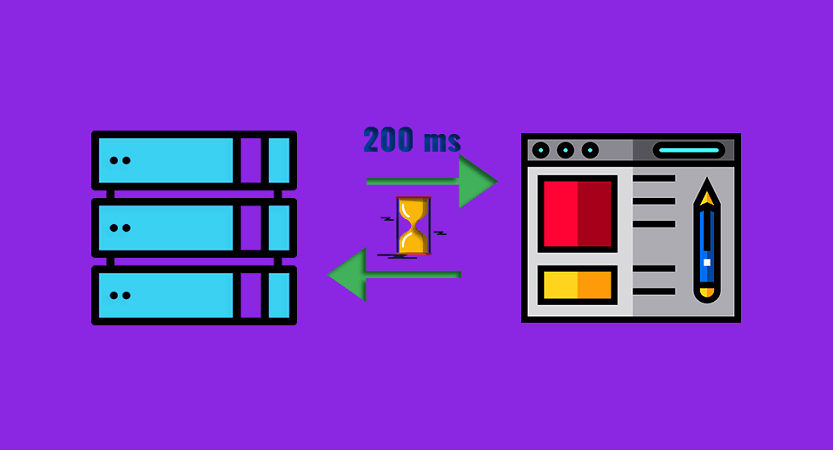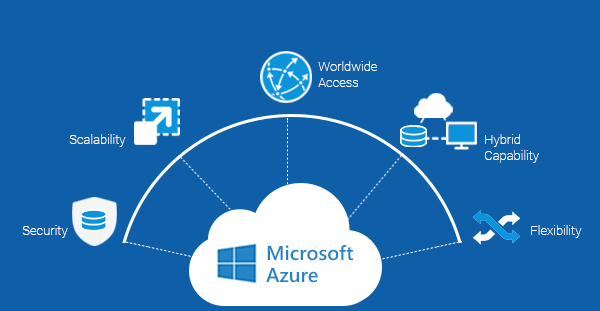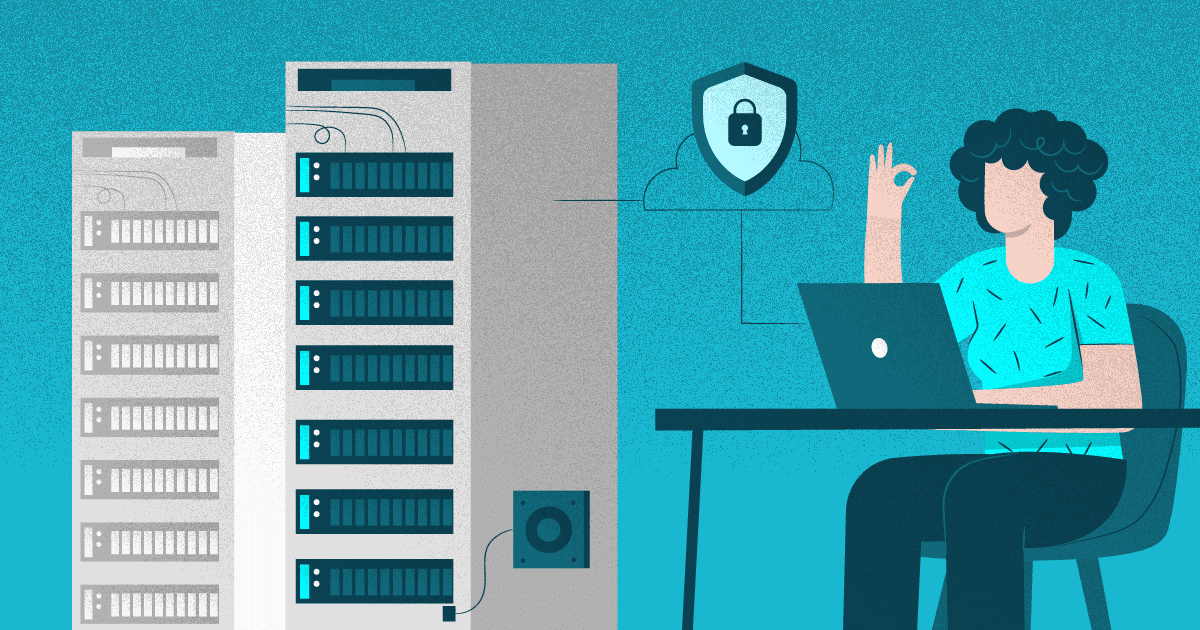People tend to use a number of online tools in order to check the performance of their WordPress site and various steps to increase their speed. Mostly they don’t get the expected results, and the main reason might be a lesser-known fact, i.e., optimizing their WordPress site to reduce server response times In WordPress may involve working on the frontend and backend, which includes a hosting solution to power up a website.
A managed WordPress hosting provider plays quite a big role in speeding up your WordPress site, while the hosting solutions are able to reduce server response times in WordPress. Therefore, the performance of a website may suffer because of a lack of adequate resources, thus making it slow. It is worth noting that slow performance is also responsible for affecting the SEO and user experience of a website.
A more accelerated website speed can play a big part in the benefit of a WordPress site. There was a time when separate plugins were installed for different tasks to increase website speed. Things have now changed with PageSpeedy.io because you can get all the features in a single handy plugin. As a user, you will not have any headaches of using and maintaining different plugins without any security, while you will not have any security problems.
What is Server Response Time?
The interval exerted by a server to react to the demand of the visitor is known as the server response time. The term Time to First Byte (TTFB) refers to the time in which a request is sent by the client, and the browser of that particular client renders the page that is requested. In the TTFB measures, there are three components involved.
- HTTP request sending
When the user originally readies a webpage, then an HTTP request receives a trigger. The request is acquired by the server, and a fitting response is rendered by it. There are a few factors that can affect the time taken by the server to receive the request, which can be the speed of the network and the distance to the server.
- Request processing
When the server is able to receive the request from the browser, there are a number of processes initiated by it, which include taking data from the database, running the scripts, and also running the backend tasks.
- Response processing
When the server is able to generate all of the components of the response, then in the next step, it sends it to the user. This particular step is completely dependent on the website hosting server performance and the speed of the internet connection of the user.

How to improve Server Response Time in WordPress?
Server response time is the major factor contributing to the overall page speed; therefore, it is an important metric that you have to keep your eye on. Consequently, it is important to improve server response time WordPress in order to get Core Web Vitals grades.
There are a number of users who happen to confuse the server response time with the page speed, but it is worth noting that server response time is simply a metric that offers you a complete idea regarding the responsiveness of your website.
TTFB is under your control most of the time, and you can tweak it to speed it up. Therefore, you have to reduce it if you want your website to be faster and have a better PageSpeed score. When you reduce server response times in WordPress, your users don’t have to wait much for the site to load, thus improving the user experience. Other than that, it is less likely that your users will bounce when waiting for the appearance of the content, which will give you higher engagement and retention.
Causes of slow TTFB
There are numerous factors responsible for affecting the Time to First Byte when it is about the WordPress sites. These include high web traffic, dynamic content, network latency, configuration and performance of the server, and DNS response time. This may lead to the slow loading of your website.
Regarding the network issues and high web traffic, there isn’t much that you are able to do, but on the other hand, there are plenty of ways that can be used to address the factors like dynamic content, server configuration, and DNS response times.
Reduce Server Response Times In WordPress
What makes a good server response time?
Normally a TTFB of under 200ms is recommended by Google. If the browser has to wait for longer than 600ms for the response of the server to the central document call, then there is a failure of the lighthouse audit. Therefore, you need to know how to improve server response time WordPress because if it is more than just a few hundred milliseconds, then you should be investigating some of the bottlenecks on your server.
It is recommended by Google that the sites must be able to process the inputs or actions of the users within 50ms in order to make sure that they get a visible response within 100ms. You should always provide feedback for the steps that may take 50ms to complete, i.e., the color of the active state can be changed, or a loading indicator can be displayed.

Measuring the server response time
The most significant step of identifying why your server response time is long is to scale it. You can measure the server response time in a number of ways, but every tool will be giving you a different output. With Microsoft Azure, you can diagnose any performance issues and improve server response time WordPress azure, but you should go with the tool with which you are familiar and comfortable.
- Measuring server response time with GTmetrix
With the help of GTmetrix, it is very easy to measure TTFB because it refers to this metric as the waiting time. You only need to scan the side and open the waterfall if you want to see the results. When you see the first result in the list, you will be able to understand the loading metrics, which include the wait time or TTFB.
- Measuring server response time with WebPageTest
Your server response time can also be measured with the WebPageTest. This is quite a useful tool that will give you the TTFB in a few seconds when you will be scanning your website to measure the response time.
- Measuring server response time with Pingdom
Referring to the server response time as wait time, Pingdom also measures it. You need to scan the site and then scroll down for the results towards the ‘File Request’ section in order to use this tool. There you will be equipped to view the specific requests and the wait interval of your site.
- Measuring server response time with Web Performance tool of KeyCDN
The online Web Performance Test by KeyCDN is another great tool for measuring the server response time. With KeyCDN, you can quickly calculate the TTFB from as many as 14 different test locations. By seeing everything clearly, you will get proof through KeyCDN that latency and distance can play a big role in TTFB.
How do we reduce server response time?
Various factors are responsible for causing a slow server response time. In order to reduce server response times in WordPress, there are a number of prominent ways that can be controlled by the site owners.
- The gap between the site visitors and the server
The distance that is traveled by the data both ways is a fundamental issue. It is very important for you to have a very good idea about who and where are your target audience before you finalize a hosting server. With the help of this detailed information, you can go for a data center that is near your target audience.
By this, you can improve server response time WordPress and make sure that the latency is at its minimum because of the small distance that the data has to travel.
You can further take support from WordPress CDN providers by retaining the copy of the website assets on the links shared globally, given if your following is global. When a page is being requested by the user, rather than going for the original hosting server, it gets served from the closed node.

- Resources of the web host
When you are to start an online business, the first thing should be to look at the resources of your host. You can use GoDaddy to improve server response time WordPress, as it is among the hosting providers that constantly upgrades its infrastructure. The idea should always be to go with the one that uses updated software and the latest hardware.
It cannot be the wisest decision for you to go with the largest of the servers out there. In order to reduce server response times in WordPress, you should go with the host that manages the resources efficiently and it applies all of the best practices of development and server management.
- Databases
A database is known to be a place that is responsible for storing all of the required information. It is important for the database to be optimized so that the server may be able to access, manage and update any information without having any delays. It needs a lot of time to fetch the correct data for the unmaintained and huge databases, and this is also a big reason why the server response time goes up.
In order to reduce server response times in WordPress, you have to fix any database-related issues, remove any data that is obsolete and unnecessary, and for faster and smarter execution, rewrite the queries.
In order to get the WordPress database optimized, you can use a few general tips, as these will be helpful for you to improve its performance. This includes tweaking of the database and database optimization that is related to the WordPress plugins like PageSpeedy.io.
- Wisely choose your WordPress hosting
When you have a broader knowledge of how the servers are capable of processing the queries of the clients, then you are ready to make a firm ruling concerning the sort of hosting solution for your WordPress website. The best fit is the one that offers a dedicated environment where it is easy to optimize and control the server components according to the requirements of the performance.
If you don’t think of yourself to be a technical person, then you can use it to improve server response time HostGator WordPress which is a highly optimized and managed WordPress hosting provider and is responsible for taking care of the service management issues.

- Dynamic or Statis content
Generally, the dynamic content is different for every user and gets generated at runtime by the visitor’s request, e.g., if one person orders coffee while the other orders hamburger, because of the similar website UI, the process will remain the same, but the server response would obviously be different because of the diverse nature of the two orders.
In order to develop two separate responses, the server would be practicing two distinct collections of data from the database. As compared to the dynamic content, the static content remains hardcoded in HTML, CSS, and images of a website. For different user input, the assets would not be changing, and every visitor will have the same content by the server. Statis is the fastest way of delivering content by not consuming resources, and therefore, it helps to reduce server response time in WordPress.
- Traffic
With little to no warning, traffic surges can surely become quite frequent with the growth of a business on a continuous basis. There are times when a server starts to receive more requests which can demand an immediate response. When the limit gets hit by the resource consumption, then eventually, the server response time goes up.
When all of the resources get consumed, the website goes down, and therefore, the brand or a business can see a decline in reputation and sales. With the help of the web host optimized for performance and capable of handling any traffic increase, you can find a way regarding how to improve server response time WordPress.
- Server software
There can be quite a serious impact on the server response time because of the stack of the server. The stack is known to be a combination of cache and servers that all come together in order to offer processing power to the server. NGINX, Apache, and MYSQL are among the popular stack components.
It is very vital that you don’t ignore to keep the WordPress and the PHP variants updated. Normally, more server resources might be required by the older versions, and they can also be inefficient in response handling. Because of the optimized processing, the core team of WordPress always recommends PHP7.
Summary
There is no doubt that it is a matter of following all of the best practices to reduce server response times in WordPress and improve its overall performance. When your hosting provider satisfies you with the time to first byte or TTFB value, then you have the chance to implement a number of ways to speed up your WordPress site. All these methods are quite simple to implement and can give a big boost to the performance of your website.
Also Read: WHAT IS SERVER ERROR (5XX), AND HOW DO YOU FIND IT